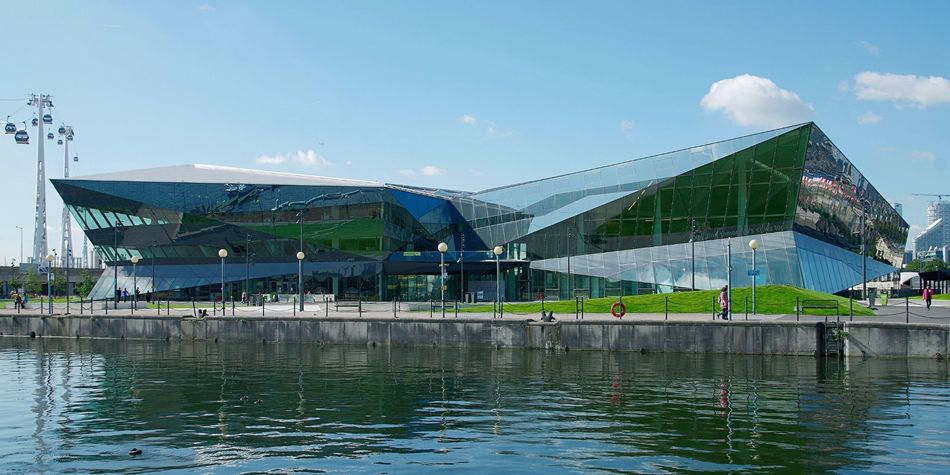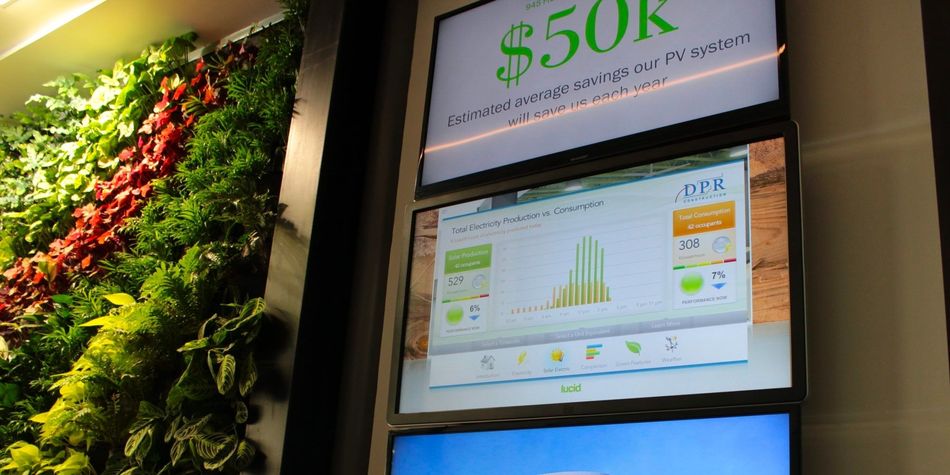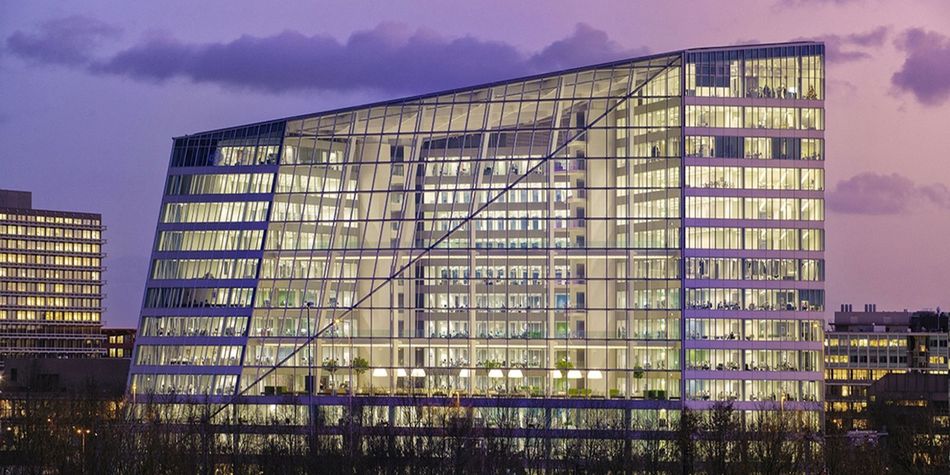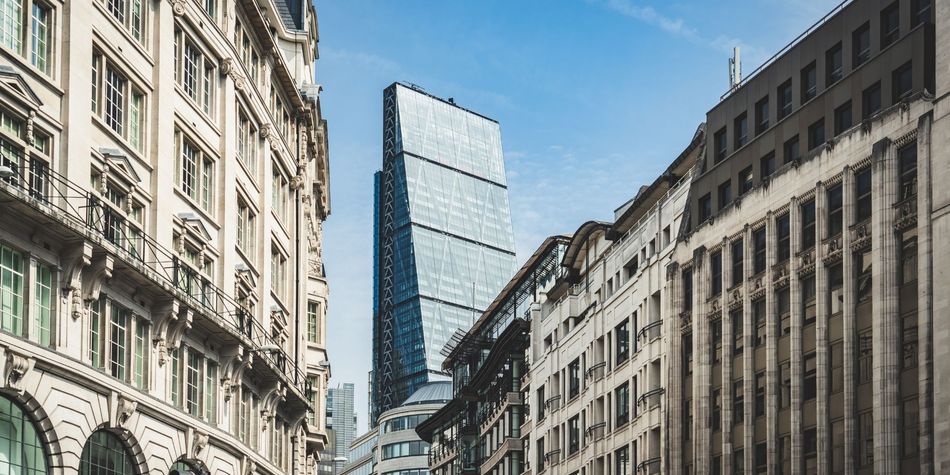5 Smart Buildings You Have Not Heard About
A smart building uses technology to obtain data. The data is then used to enable automatic, efficient, and economical use of resources while maintaining a safe and pleasant environment for occupants.
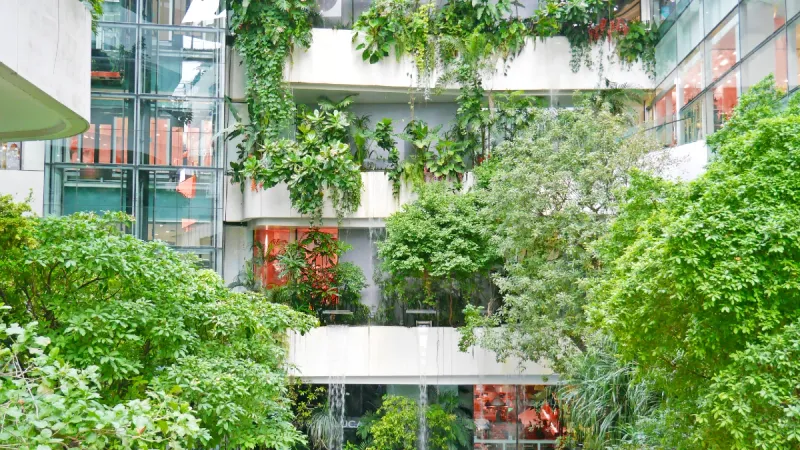
A smart building uses technology to obtain data. The data is then used to enable automatic, efficient, and economical use of resources while maintaining a safe and pleasant environment for occupants.
Typically, a smart building is a “new build”, but the term can also apply to legacy buildings retrofitted with smart technology. In either case, Internet of Things (IoT), building management systems, and artificial intelligence are used to control and optimize the performance of the building. This includes:
- Energy efficiency and sustainability
- Occupancy utilization
- Environmental optimization
- Security
- Health and Safety compliance
In this article, we showcase 5 smart buildings that use technology in different ways to the same end: sustainability, productivity, and wellbeing.
#1 - The Crystal, London
The Crystal is located in London's Green Enterprise District and became the first building to achieve BREEAM Outstanding and Platinum LEED sustainability rankings when it opened in 2012.
The building generates around 70% less CO2 than similar buildings through a combination of rainwater harvesting, black water treatment, solar heating, and automated building management systems.
Key features of the building include:
- It is a 100% electric building, around 20% of which is generated by the 1580 m2 of solar photovoltaic roof panels that cover two-thirds of the roof
- Ground source heat pumps that supply virtually all of the building's heating and most of its cooling. By using 100% natural heat sources, the building receives no heating bill.
- A sophisticated building management system that monitors every all electricity usage
- Self-shading facades that use high-performance solar glass to allow around 70% of visible light through each window but only about 30% of the solar energy
- A lighting control system that manages all lamps for optimized electricity consumption
- A window control system to allow air in from outside during hot weather, which automatically closes windows and puts an interior ventilation system during extreme weather.
#2 - DPR Construction Net-Zero Energy San Francisco Regional Office
When the DPR regional office in San Francisco was being designed, its goal was “to incorporate cost-saving and environmentally-friendly features” that would achieve net-zero energy certification and serve as a ‘living lab’ to test the newest and most intelligent energy-efficient products on the market.
As a result, it uses many smart features, including:
- Net-Zero Building (NZEB) Certification. NZEB means that the total amount of energy used yearly by a building is equal to or less than the amount of energy created onsite through the use of innovative technologies and renewable power generation
- 300 photovoltaic panels to generate renewable energy
- Rooftop solar thermal water heating system
- Electrochromic windows
- 8 solar-powered, automated skylights over an atrium
- Ultra-energy efficient ceiling fans
- 3 living walls and a living wine bar
- Use of reclaimed redwood and Douglas fir
- Ultra-low flow and flush plumbing fixtures
#3 - The Edge, Amsterdam
The Edge, in the Zuidas business district in Amsterdam, has been described by many as the smartest building in the world.
It has perhaps the world's largest deployment of IoT sensors in a single location (28,000), with the collected data used to adapt the building to meet real-time requirements. For example, areas can automatically be shut down or closed when no one is present, thereby saving energy.
Other smart features in The Edge include:
- Sensor data for motion, light, temperature, and humidity
- Solar panel roof
- Energy reuse – excess ventilation air from offices is reused to air-condition the atrium space
- Rainwater reuse – collected rainwater is used to flush toilets and irrigate the green terraces in the atrium and other garden areas surrounding the building
- Thermal energy storage – Two 129m deep wells reach down to an aquifer, allowing thermal energy differentials to be stored deep underground.
- An employee app, combined with data from sensors, provides:
- personalized schedules
- access control around the building
- assistance finding a workspace or parking place
- Adjust the office temperature has 98.4% sustainability rating from BREEAM
#4 - Allianz Arena, Munich
The Allianz Arena located in Munich, Germany is a football stadium with a capacity of 70,000 spectators.
It is nicknamed the Inflatable Boat (Schlauchboot) and has a unique lighting feature. The arena’s exterior, through the control of 3,000,000 lights, can change color e.g. have rainbow colors during Pride month.
Internally, the stadium uses the latest smart technology to provide a pleasant and safe environment for both the football club and its supporters. For example:
- sensors and cloud-based analytics to monitor the health of the grass on the pitch if the temperature is too cold the grass will be heated and if the ground is too dry it will be watered.
- acoustic cameras with sound mapping software are used to study how fans respond throughout the game
The external lighting system is energy efficient and saves approximately 60 percent on electricity and 362 tons of CO2 per year compared to other similar facilities.
#5 - Leadenhall Building, London
The Leadenhall Building is London’s second-tallest building.
Known as the “cheesegrater”, owing to its shape, extensive use of IoT technology was made during its construction. RFID-based data tags helped builders and construction companies to track the location of components and installation.
This enabled around 83% of the construction to be completed off-site, streamlining the building process, improving project management and control of the building works.
The 48-story building includes many smart features, including:
- 293 energy meters on-site to monitor the use of lighting
- Intelligent and state of the art lifts that can go from the ground floor to the top floor in 30 seconds
- low-flow water fixtures and fittings
- external glazing which includes vents every seventh floor to let air circulate freely, reducing the need for AC systems
Conclusion
These five examples demonstrate how buildings can integrate IoT and smart building technology in many different ways.
From the initial design and construction, where RFID tagging was used to track building components through renewable energy production and sustainability, to intelligent working and sporting environments, energy savings, recycling of air and water, and access control smart buildings are now on the rise.
As the world continues to fight against climate change and recover from the COVID-19 pandemic, there is a greater need for buildings to become more energy-efficient and to lower their CO2 footprint. In addition, after millions of employees successfully adapted to working from home, the office workspace needs to be more wellness-aware in order to attract workers back.
Intelligent buildings are here to stay.
